Count on the Subway. Paul Dubois Jacobs and Jennifer Swender. Illustrated by Dan Yaccarino. 2014. Random House. 32 pages. [Source: Review copy]
1 MetroCard, Momma and me.
Down 2 flights to catch the 3.
4 turnstiles, singers 5.
A rumble, a screech, the train arrives.
6 empty seats, sit right down.
7 more stops, going uptown.
I really enjoyed this bright and bold counting book. A young girl and her mom go on the subway. The experience allows readers a chance to count from one to ten and back again. I liked it. I really liked it. I liked how the numbers were incorporated right into the story. I liked that there actually is a story to this concept book. The language is very descriptive. Possibly my favorite: "4 doors open. Time to move. 3 drums thumpin' a rush hour groove." The rhythm and rhyme just work really well in this one.
The illustrations are by Dan Yaccarino. His style, as always, is very unique. Some of his other books include: Go, Go America; Every Friday; All the Way to America; Oswald; and Good Night, Mr. Night. Some images--some illustrations--work better for me than others. There were scenes in this one that I did enjoy. But there were also some that puzzled me. (Blue people? Purple people? Green people? Orange people? Though I admit that kept the mom and daughter always in focus.)
Text: 5 out of 5
Illustrations: 3 out of 5
Total: 8 out of 10
Meanwhile, Back at the Ranch. Anne Isaacs. Illustrated by Kevin Hawkes. 2014. Random House. 56 pages. [Source: Review copy]
On the fourth of July 1870, the widow Tulip Jones of Greater Bore, England, inherited thirty-five million dollars and a ranch at By-Golly Gully, Texas. She moved there at once. She brought two trunks of tea and her twelve pet tortoises: January, February, March--and so on, in order of age, down to little December, who was not much bigger than the period at the end of this sentence. Three servants came along as ranch hands: Linsey, Woolsey, and Calico. They had arrived in the middle of the hottest summer Texas had ever known. By-Golly Gully was so hot that chickens laid hard-boiled eggs, and lizards hobbled around on tiny stilts to avoid burning their feet on the ground. "Grab your hoes, girls!" said Tulip Jones. "We're going to plant a garden." She soon found that everything raised on Texas soil grows faster, bigger, and better than anywhere else.
I loved, loved, loved this one. I did. It was WONDERFUL. It had me from hello, from the endpapers which read: "under full penalty of law, exaggeration is forbidden in the state of Texas. No Texan may decorate a plain fact--except if that person is an elected official, or anyone who has ever ridden a horse. In such cases, all exaggeration must be restricted to the first twenty-four hours past sunrise." From the very start, readers know this tall tale is going to be something special. And in tall tales, the magic is all in the details.
Meanwhile Back at the Ranch is the story of a rich widow being pursued by thousands of cowboys. Some of the cowboys, the most persistent of the bunch, belong to the "Hole in the Pants" gang. Tulip Jones, our heroine, does NOT want to marry anyone, or so she says, so with a little help from Linsey, Woolsey, Calico, and her brand new friend Charlie Doughpuncher, she'll try to find a good solution. How does one go about getting rid of persistent suitors?
As I said, I loved, loved, loved the storytelling. It's funny. And dare I say it's a bit romantic?!
Text: 5 out of 5
Illustrations: 4 out of 5
Total: 9 out of 10
Miles to the Finish. Jamie Harper. 2014. Candlewick. 32 pages. [Source: Review copy]
"Hey, Otto!" calls Miles.
"Whoa! Nice wheels."
"Check it out--it's a Speedster 660!" says Otto.
"Where did it come from?" asks Miles.
"That's my car. I'm Indie. Are you racing today, too?"
"How fast does it go?" asks Miles.
"Fast," says Indie.
If you enjoyed Miles to Go, chances are you'll enjoy Miles to the Finish. Miles and his friends--some old friends, some new friends--are having a big race. Most of the entries in the race run on kid-power: the power of feet! But Indie's entry is not. It's electric. Miles knows that he'll have to be in GREAT shape if he is to have a real chance. So he trains during recess! The race itself focuses on Miles, Otto, Axel, and Indie. Who will win?!
I like that Indie is a girl. I like that Miles makes a new friend, and that when it counts he puts friendship ahead of winning. I liked this one overall. But I didn't love it. I still really like the illustrations.
Text: 3 out of 5
Illustrations: 4 out of 5
Total: 7 out of 10
Baby's Got the Blues. Carol Diggory Shields. Illustrated by Lauren Tobia. 2014. Candlewick. 32 pages. [Source: Review copy]
You think babies have it easy?
Let me tell you, that's a lie.
Sometimes being a baby
Is enough to make you cry,
'Cause I'm a baby,
And I've got those baby blues.
B-A-B-Y, baby,
Got the poor little baby blues.
I liked this one. In places. There were some places that I found the text could lend itself easily to being sung--blues style, of course. For example, "I'd like to eat some pizza, Macaroni, or beef stew, but I haven't got a single tooth, so I can't even chew." Those lines are probably my favorite of the whole book. I really like the concept of a baby singing the blues, of a baby sharing WHY his life is oh-so-hard. But it remains a solid like and not a love.
Text: 3 out of 5
Illustrations: 3 out of 5
Total: 6 out of 10
Miss You Like Crazy. Pamela Hall. Illustrated by Jennifer A. Bell. Tanglewood Press. 32 pages. [Source: Review copy]
Walnut crunched Honey Bumbles for breakfast.
"Ready to make tracks?" Mom asked.
"I want to stay home," Walnut groaned.
"Don't you miss me all day?"
"Only like crazy, Mom said, snitching a Bumble crumb.
"I wish I could fold you up and pack you in my briefcase."
Walnut has to go to preschool (or daycare?) and the mom squirrel has to go to work. There are many picture books about separation anxiety. This one does get creative in places. It starts with her playfully saying that she wishes she could pack him in her briefcase. The illustrations show the oh-so-tiny Walnut with his mom at work: shows him in her pencil cup, climbing paper clip ladders, etc. The two take turns elaborating the adventure. It doesn't take long for them both to leave work behind and the fantasy becomes a bit out of control. But this one is grounded in reality. The fact remains that they can't always be together physically, and he has to be okay with that.
Text: 3 out of 5
Illustrations: 3 out of 5
Total: 6 out of 10
The Farmer's Away! Baa! Neigh! Anne Vittur Kennedy. 2014. Candlewick. 32 pages. [Source: Review copy]
neigh neigh baa baa quack quack tweet
arf oink ree ree cluck cluck cheep!
ribbet mama ribbet mama
eek honk quack
splish splash baa baa
moo moo yap
The story itself is told through the illustrations. The illustrations show young readers what happens on the farm when the farmer goes away for the day. The day is absolutely full of adventure: silly, over-the-top adventure. To name just a few things they do: Ride a roller coaster, have a picnic, go water skiing, go dancing. And that's just a few activities. The book does have text. But the text is ALL animal sound. It makes for a very playful, very rhythmic read-aloud. It's just a very fun book.
Text: 4 out of 5
Illustrations: 4 out of 5
Total: 8 out of 10
Peanut Butter and Jellyfish. Jarrett J. Krosoczka. 2014. Random House. 40 pages. [Source: Review copy]
Peanut Butter and Jellyfish were the best of friends. Best of friends who spent their days exploring up, down, around, and through their grand ocean home.
Unluckily for them, though, they lived near Crabby.
I don't know what I was expecting, but, it certainly wasn't a book about bullying. Peanut Butter and Jellyfish isn't a silly and playful book.
Every day Crabby has something new to say to Peanut Butter and Jellyfish. They don't like Crabby's attitude, but, these two certainly aren't upset and bothered by what he says. In fact, they seem to be very good at ignoring it. I get the feeling that Crabby wants more of a reaction from these two friends.
One day Crabby's not there to say mean things. One day Crabby is in need of their help. He's been caught in a trap. Of course, Jellyfish and Peanut Butter are there and are willing--very willing--to help Crabby. And, of course, the book ends with a reformed Crabby.
This one is predictable. I wanted something more, I suppose.
Text: 3 out of 5
Illustrations: 3 out of 5
Total: 6 out of 10
E-I-E-I-O How Old MacDonald Got His Farm. Judy Sierra. Illustrated by Matthew Myers. 2014. Candlewick. 32 pages. [Source: Review copy]
Old MacDonald had a house, E-I-E-I-O!
Around that house there was a yard...
Mow
Mow
Mow
Mow
Mow!
MacDonald said, "I love my yard,
but mowing grass is mighty hard."
So off he went to get a goat, E-I-E-I-O!
The goat just nibbled at the edges.
Then she ate MacDonald's hedges.
Soon the plot began to thicken:
Old MacDonald got a chicken. E-I-E-I-O!
Picture books are completely subjective. But I thought this was a mess of a book. The text. I really had a hard time with it. This isn't the first Judy Sierra text that has proved irritating. The reason I keep giving her a chance is because every now and then she writes a wonderful little book like SUPPOSE YOU MEET A DINOSAUR. The story of this one is that slowly-but-surely Old MacDonald turns his unmanageable yard into a working farm. And before it gets better, it gets a whole lot worse. I don't know if the intent was to preach about compost heaps or not. But it was a bit much. "And when the mud had turned to goop, the Little Red Hen, atop her coop, clucked, "Who will help me find some poop?" Or maybe it was preaching about buying local and organic vegetables? I don't know. I just felt preached at, and, not in a good way.
Text: 2 out of 5
Illustrations: 2 out of 5
Total: 4 out of 10
© 2014 Becky Laney of Becky's Book Reviews



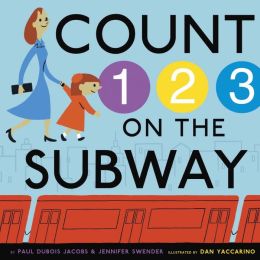
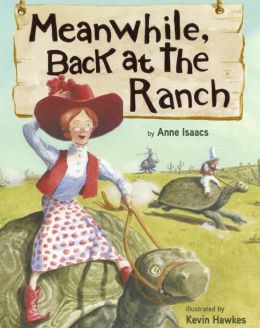
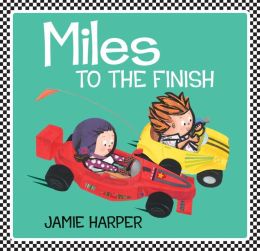
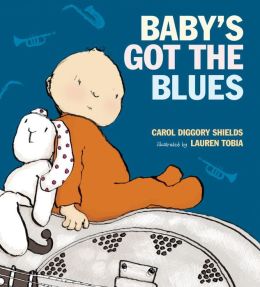
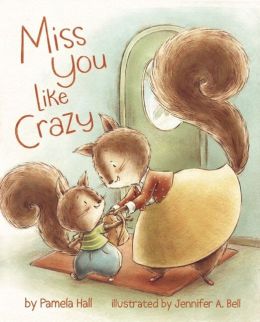
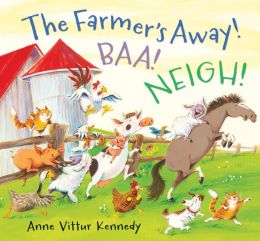
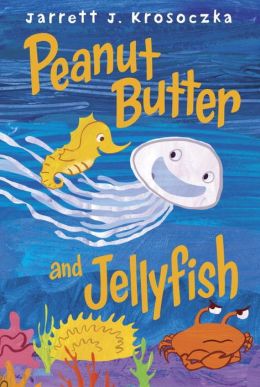
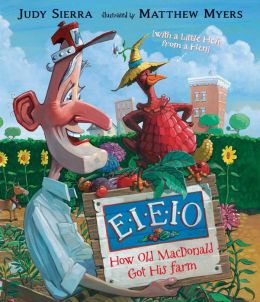
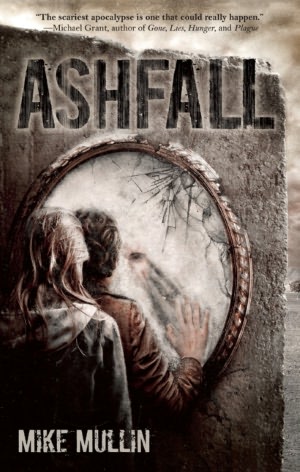

I really loved Ashfall. Too many post-apocalyptic books skip over the basic survival stuff that Ashfall doesn't shy away from.